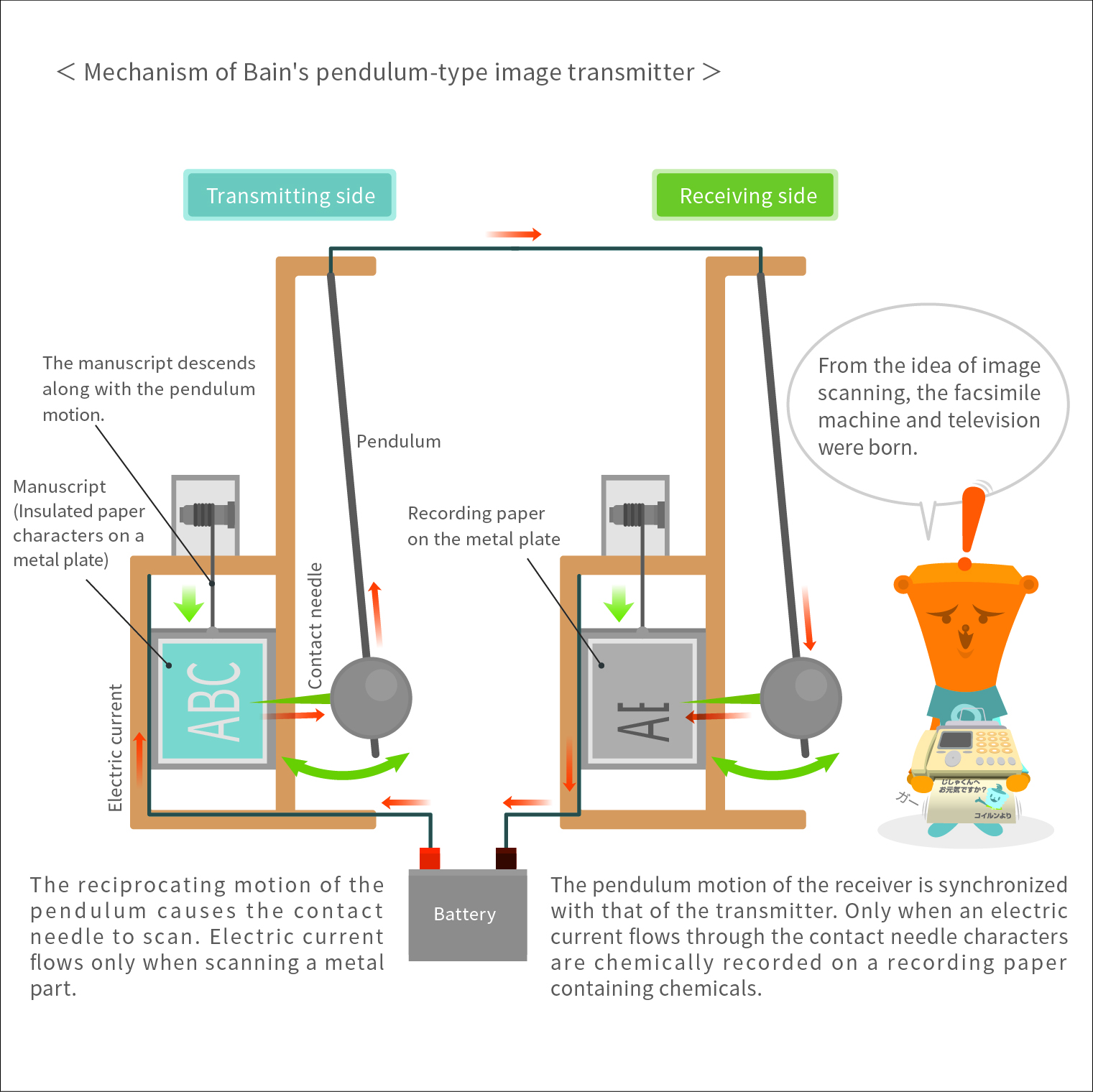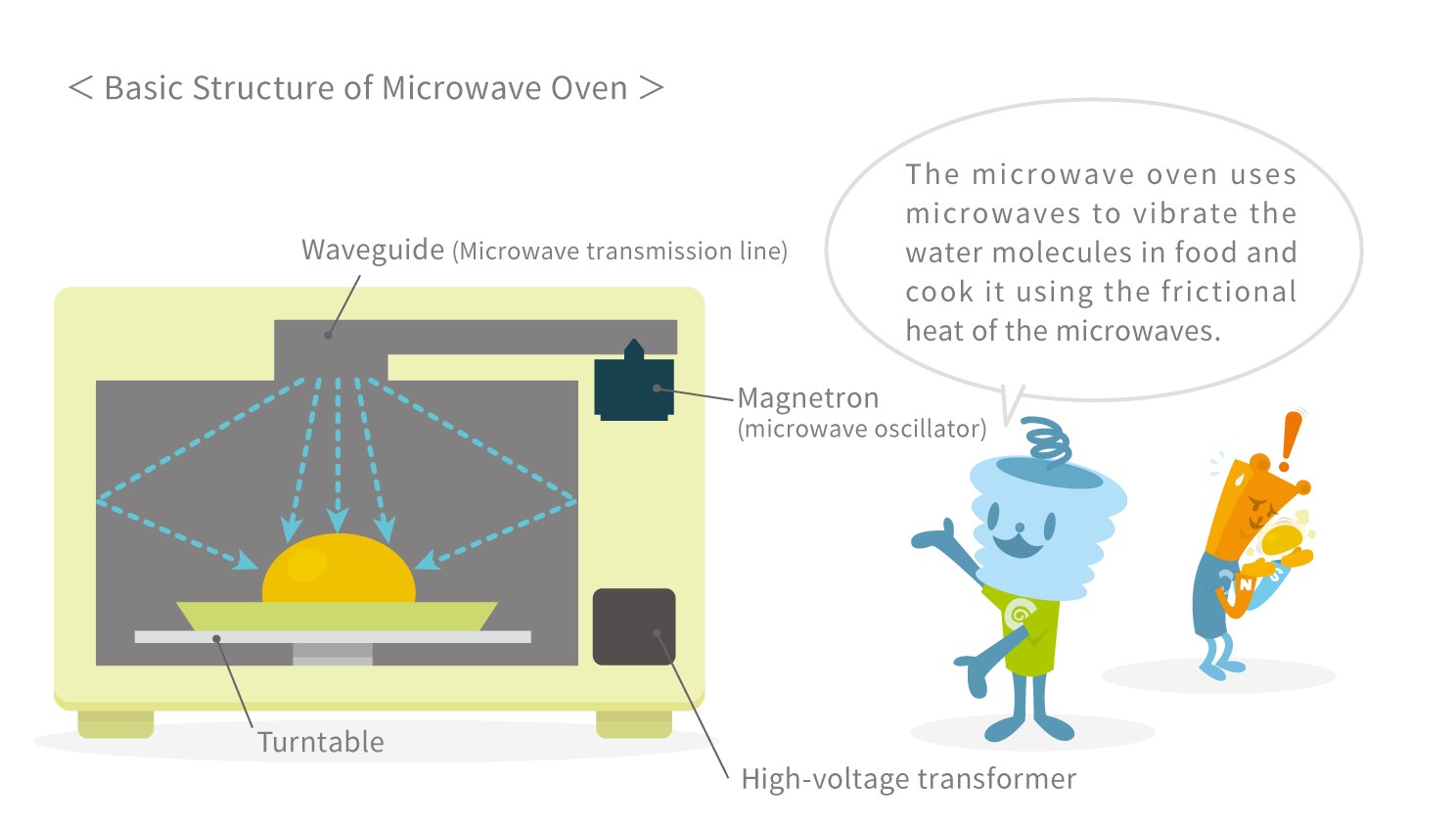The Wonders of Electromagnetism
Demystifying Eddy Currents: Electromagnetic Cookers and Beyond

When magnetic flux changes inside an electrical conductor, such as a metal, loops of swirling current known as eddy currents are generated. Eddy currents are utilized widely, from electromagnetic brakes on heavy-duty vehicles and trains to electromagnetic cookers and “IH” (induction heating) electronic rice cookers.
The principle behind eddy current generation
In classical mechanics, the principle of inertia states that a moving object continues moving, and a stationary object remains stationary. Electromagnetism works in a similar way. When an electrical conductor is exposed to a change in magnetic field, it generates magnetic flux through electromagnetic induction, which resists the change. This magnetic flux is created by eddy currents.
To put it simply, think of eddy currents as coils that form inside a conductor. The conductor itself becomes a “natural coil” or “natural electromagnet” of sorts—and tries to resist changes in the magnetic field.
The connection between Foucault’s pendulum and eddy currents
Eddy currents, also known as Foucault’s currents, were discovered in 1855 by Léon Foucault, the inventor of the Foucault pendulum. Eddy currents are spiral-shaped currents that form within electrical conductors, such as metals, when they are placed inside a changing magnetic field.
The effect of eddy currents can be confirmed by a simple experiment. As shown in the figure below, if a magnet is quickly spun over a metallic disk made of copper or aluminum—materials that are not attracted to magnets—the disk begins to spin along with the magnet. Conversely, if the disk is kept rotating, and a magnet is brought close to it, the rotation will see a braking effect. This phenomenon, known as Arago’s (disk) rotations, was discovered by François Arago in 1824. Foucault later determined that the phenomenon was caused by eddy currents generated within the disk.
In addition to eddy currents, Foucault is known for another historical achievement: the Foucault pendulum. It was the first device to demonstrate the rotation of Earth in a form observable to the naked eye. Let’s briefly shift our focus to discuss how the Foucault pendulum works.
The Foucault pendulum consists of an iron ball attached to the end of a long wire, allowing it to swing back and forth for extended periods of time. Because the pendulum’s plane of oscillation (the direction of the weight’s swing) remains constant, the plane appears to rotate as Earth rotates.
The rotation of a Foucault pendulum’s plane of oscillation may be a challenging idea to grasp intuitively, but it can be easier to understand if the viewpoint is moved to outer space.
Imagine a Foucault pendulum positioned at the North Pole. When observed from space, the pendulum’s plane of oscillation remains fixed. However, as the observer moves along with Earth’s rotation, from the observer’s perspective, the plane appears to rotate. At the North Pole, the plane will perceivably make a full rotation per day. If the pendulum’s position is decreased in latitude (moved southward), the amount of rotation decreases, eventually becoming zero over the equator. The perceived rotation becomes counterclockwise in the southern hemisphere.
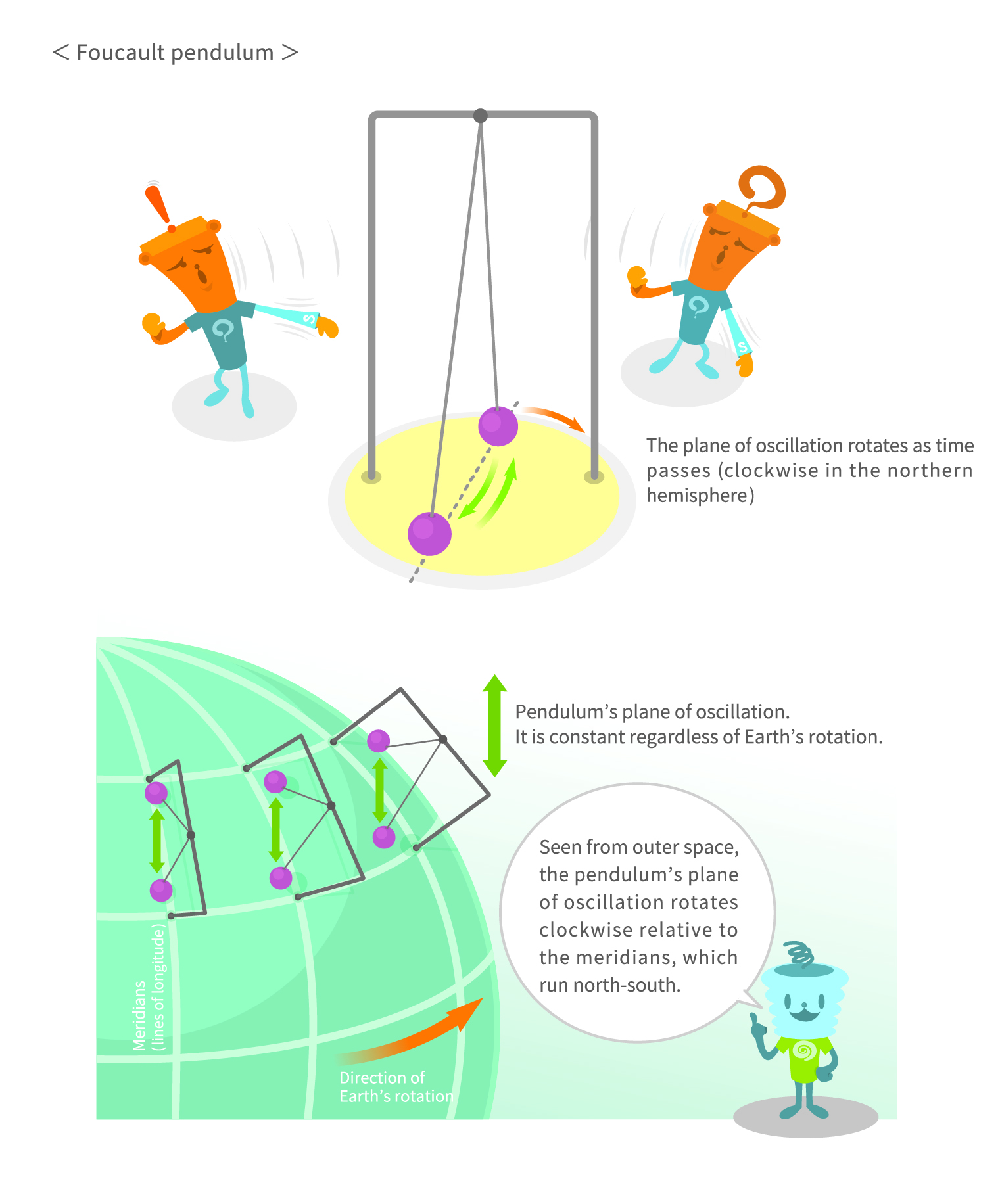
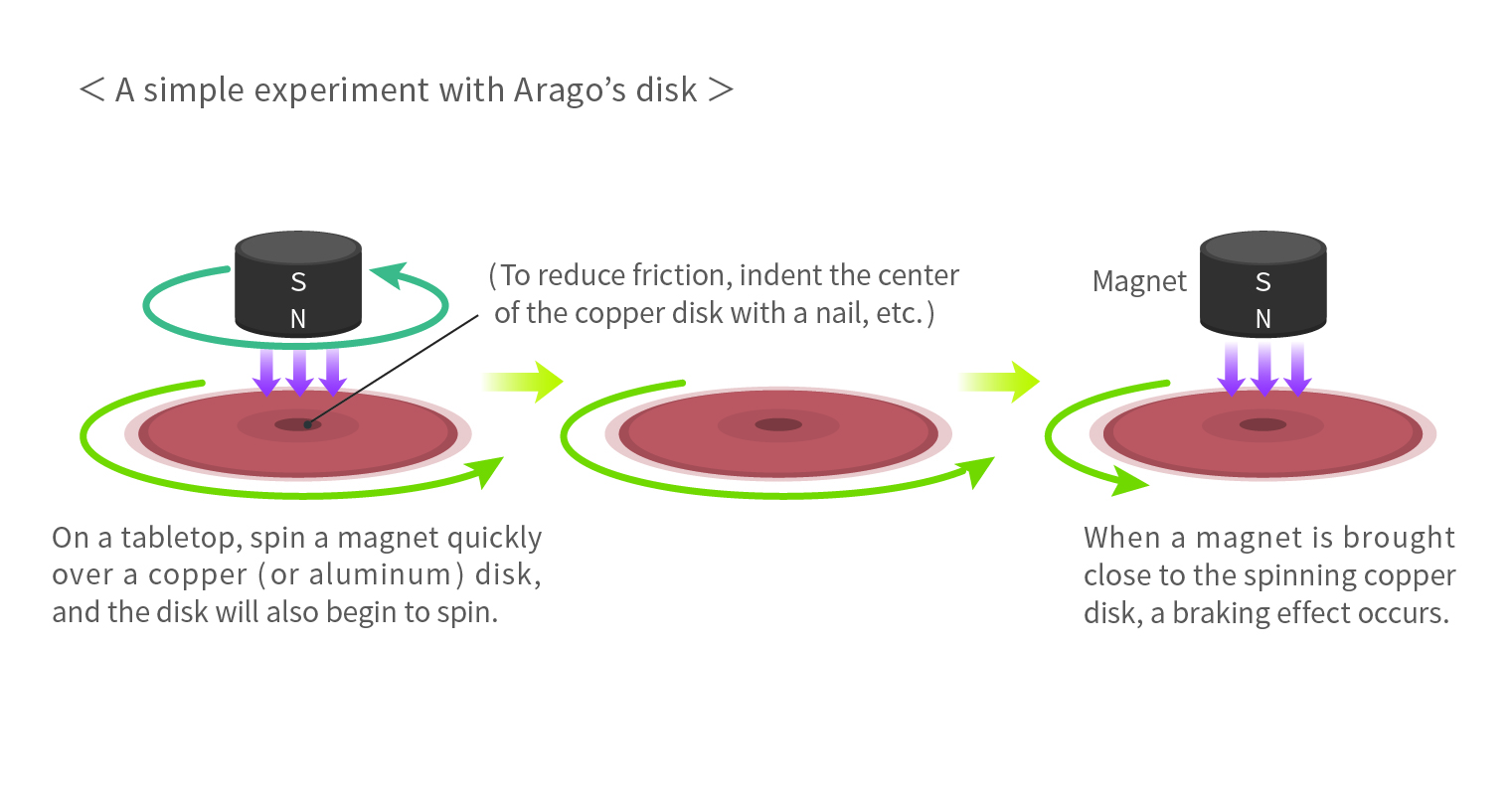
Eddy currents enable electromagnetic brakes on heavy-duty vehicles and trains
A common application of the effect of eddy currents is the electromagnetic brakes found on heavy-duty vehicles and trains. Also known as eddy current brakes, they are used as auxiliary brakes when going downhill. Structurally, an electromagnetic brake is composed of electromagnets placed near a drum attached to the rotating axle. When the electromagnets are activated while the vehicle is in motion, the rotating drum generates eddy currents that interfere with changes in the magnetic flux of the electromagnets, exerting a braking effect on the rotation.
A key advantage of electromagnetic brakes is the absence of wear-out on brake drums and other components since they operate without mechanical contact. But where does all the kinetic energy go when the electromagnetic brakes are reducing a vehicle’s speed? According to the law of conservation of energy, energy can neither be created nor destroyed. Therefore, the answer lies in an effect known as Joule heating, where the kinetic energy is converted into heat.
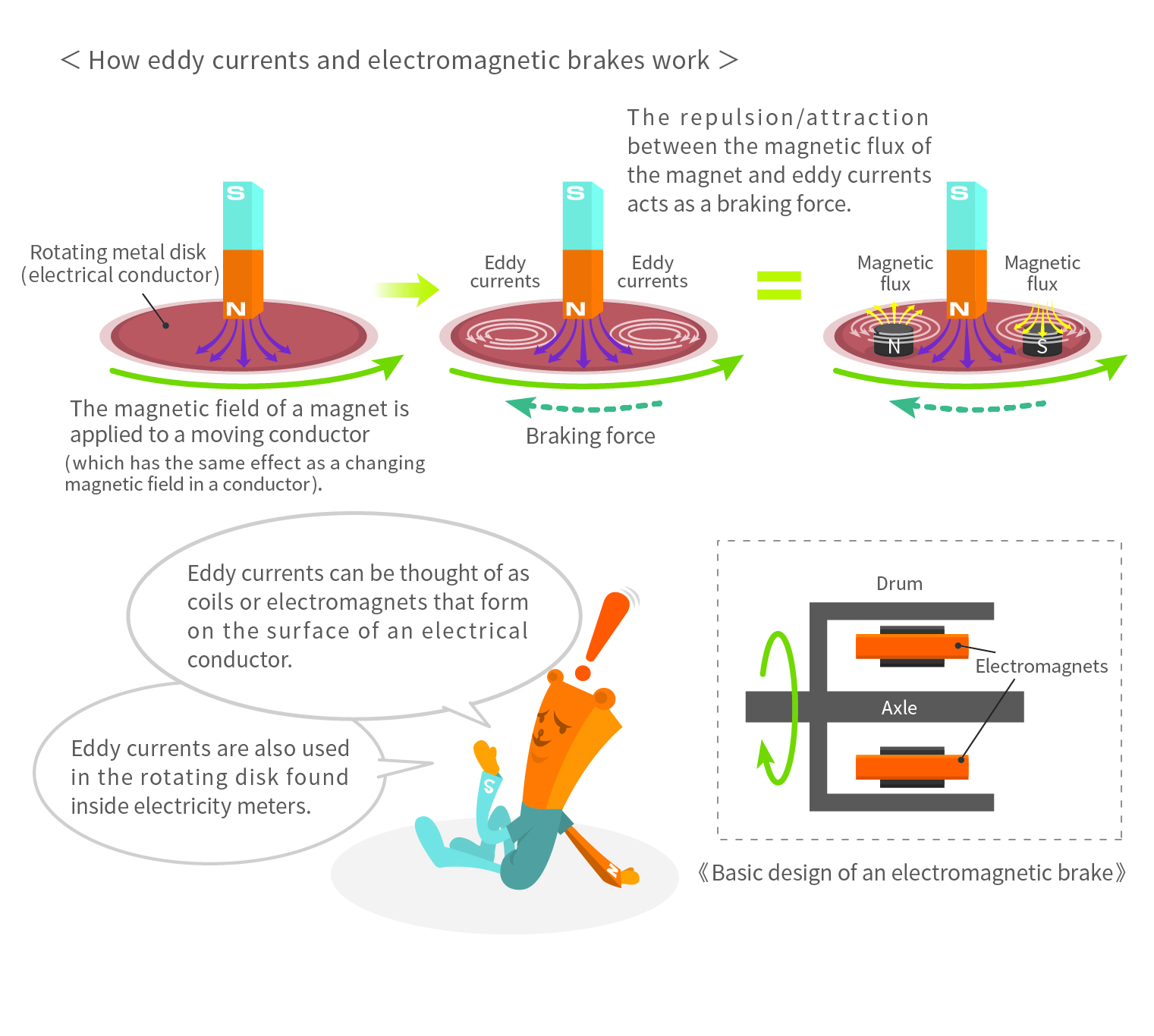
How do induction heating rice cookers work?
Electromagnetic cookers and “IH” (induction heating) rice cookers are examples of heat generated by eddy currents being put to practical use.
The coils inside a cooker generate high-frequency alternating currents. These high-frequency currents create intense magnetic field fluctuations, generating eddy currents within the walls of electro-conductive pots and pans, and the consequent Joule heat cooks the food.
Despite the advantages of eddy currents, their use can present challenges for certain devices like transformers, for example. In a transformer, changes in magnetic flux created by changes in current in the primary coil are transferred to the secondary coil via a magnetic core. When this happens, eddy currents flowing through the core begin generating heat, based on the same principle as an electromagnetic cooker. This is referred to as eddy current loss. To reduce eddy current loss, a transformer typically uses a core comprising stacked layers of thin silicon electrical steel plates. However, at high frequencies, this approach is ineffective, as heat generation loss increases exponentially (because eddy current loss is proportional to the square of the frequency, and the loss becomes overwhelming in high-frequency ranges).
This is where ferrite comes into play as an indispensable core material for transformers and coils used at high frequencies. Ferrite is a polycrystalline material primarily composed of iron oxide—and, unlike metals, exhibits high electrical resistance, which significantly reduces heat generation loss.
Ferrite is an electronic material that is said to have unlimited possibilities because its characteristics can be customized extensively by fine-tuning trace additives and sintering conditions during manufacturing. TDK’s ferrite cores are widely employed in a variety of electrical and electronic equipment like PCs, mobile phones, digital TVs, and hybrid vehicles—contributing to energy conservation, miniaturization, and performance improvements.
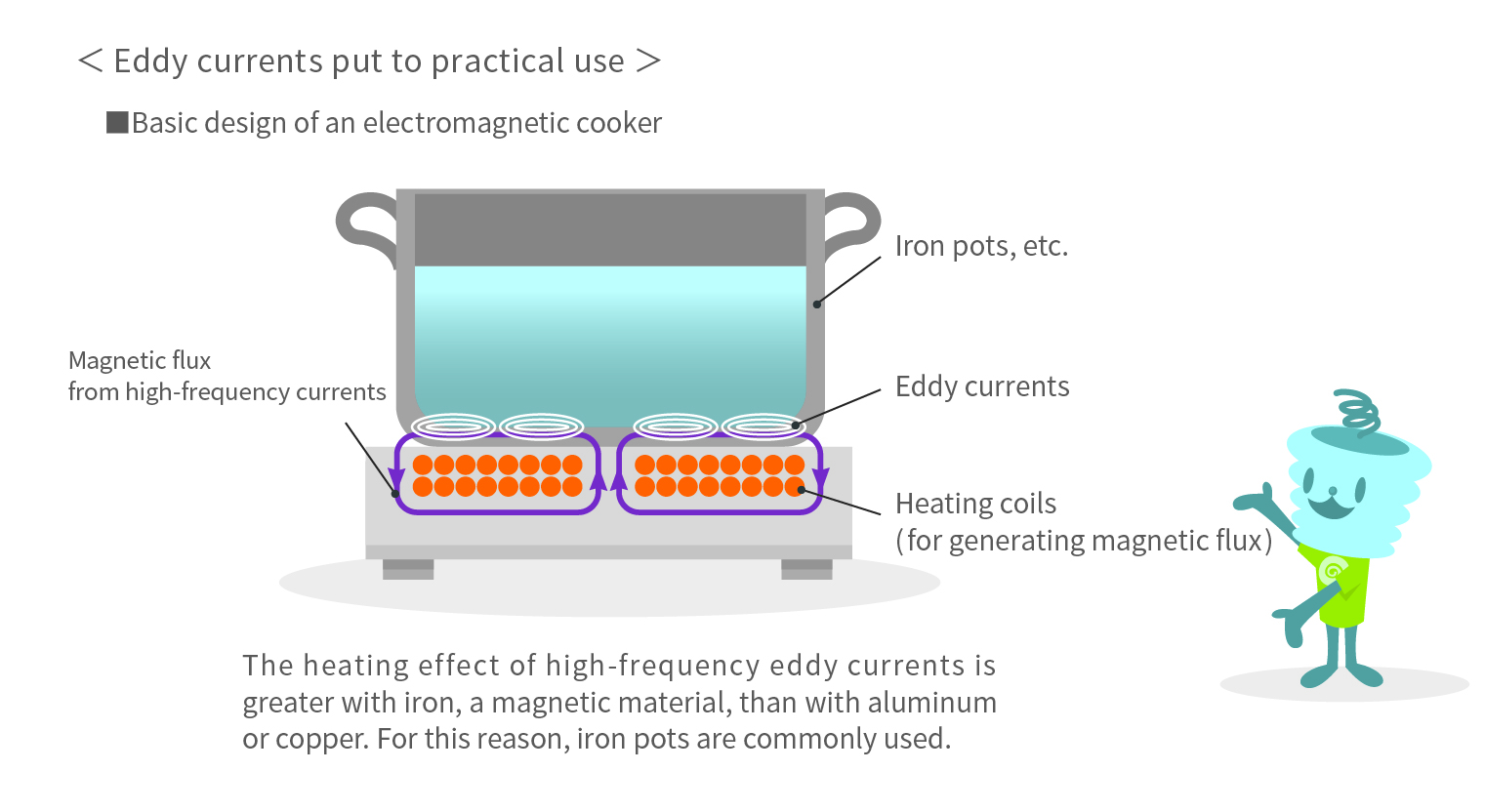
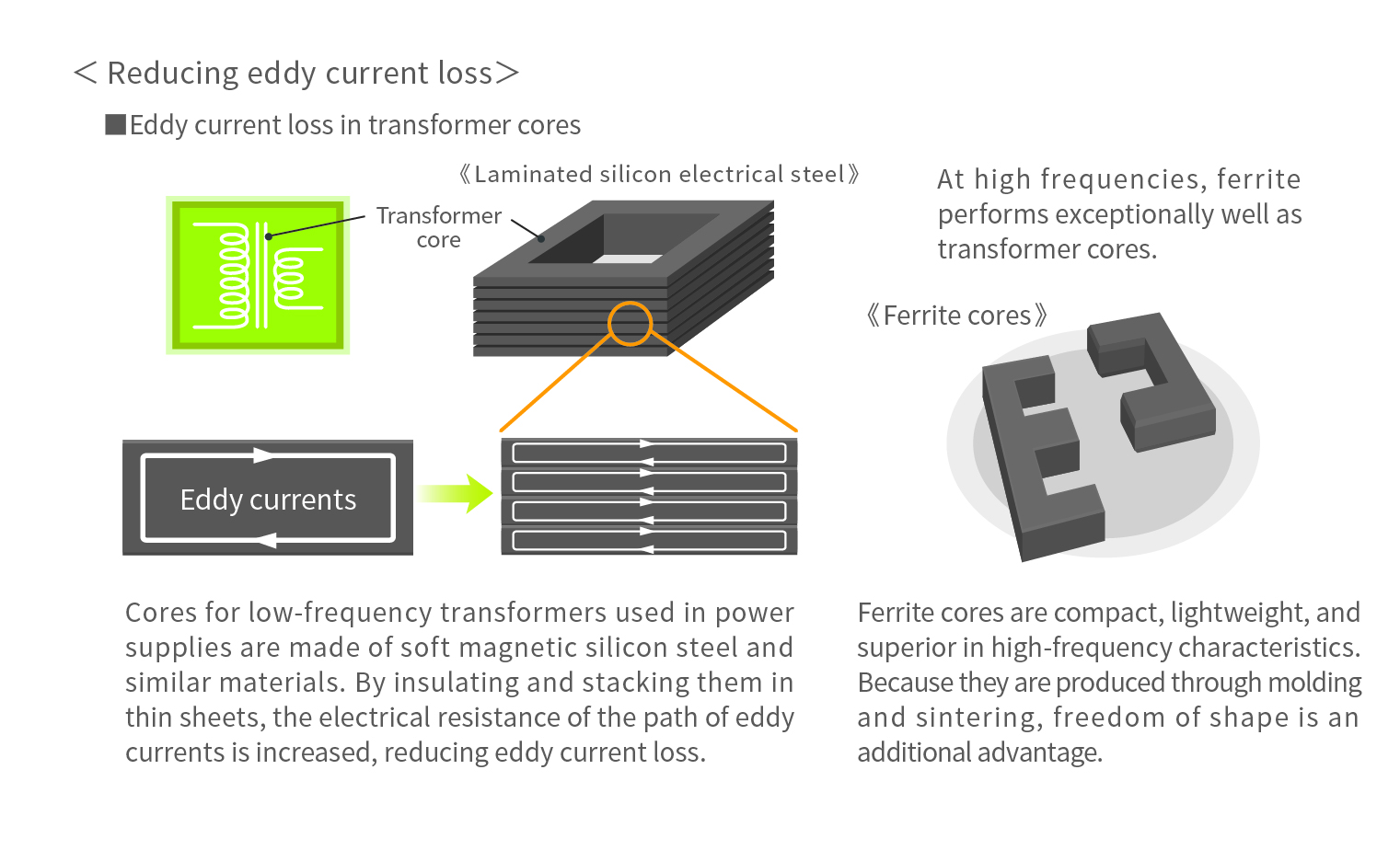
TDK is a comprehensive electronic components manufacturer leading the world in magnetic technology



